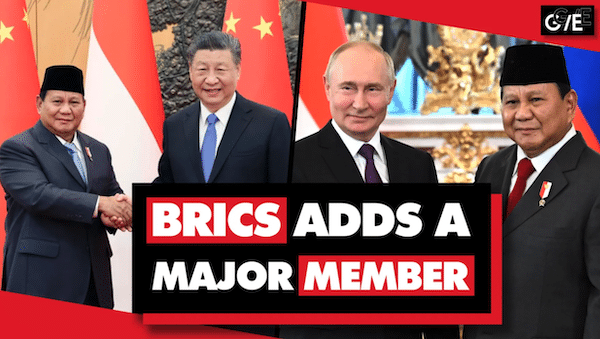The Global South-led organization BRICS has expanded again.
Indonesia, the largest country in Southeast Asia, has officially been admitted into the group as a full member.
Indonesia is the fourth-most populous country on Earth, with the seventh-biggest economy.
BRICS now has 10 full members. These are:
- Brazil
- Russia
- India
- China
- South Africa
- Egypt
- Ethiopia
- Indonesia
- Iran
- United Arab Emirates
Another eight countries became BRICS partners in January 2025 as well, including:
- Belarus
- Bolivia
- Cuba
- Kazakhstan
- Malaysia
- Thailand
- Uganda
- Uzbekistan
The following is a map of BRICS members and partners, as of January 6, 2025:
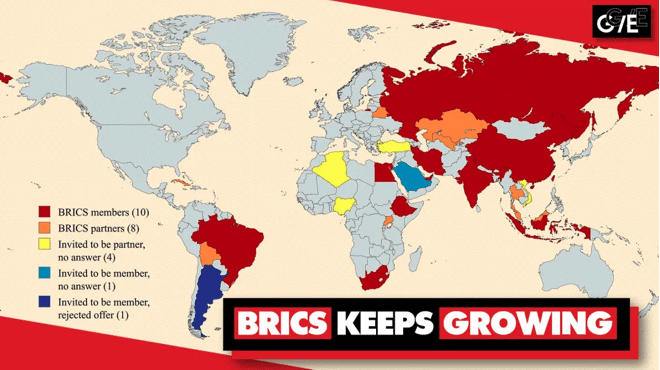
BRICS makes up 41.41% of global GDP (PPP)
The 18 BRICS members and partners made up 41.4% of global GDP, when measured at purchasing power parity (PPP), according to October 2024 data published by the IMF.
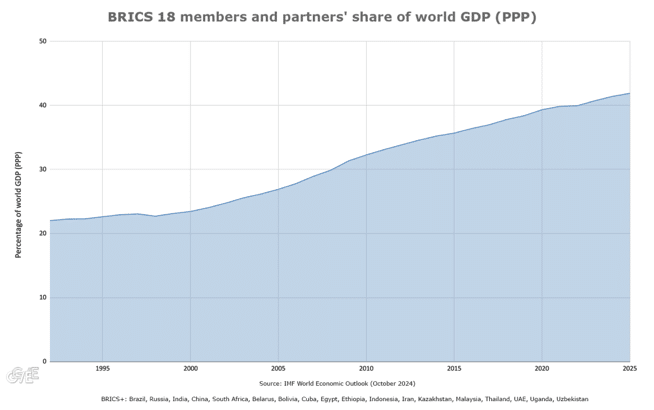
Just the 10 BRICS full members comprised 38.8% of global GDP (PPP) in 2024.
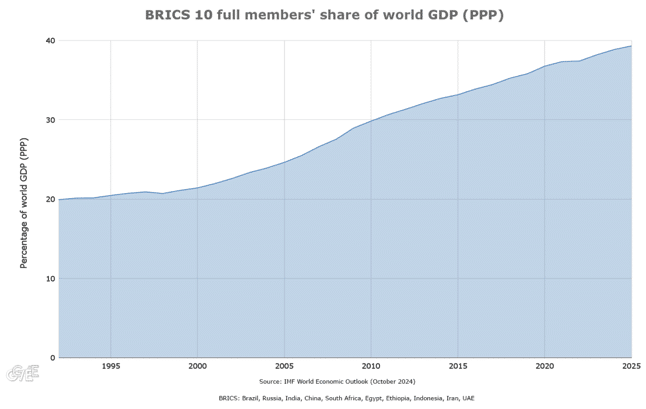
BRICS countries make up a significantly larger share of the global economy than the G7, the group of seven Western countries that colonized most of the world.
Combined, G7 members Canada, France, Germany, Italy, Japan, the United Kingdom, and the United States comprised 29.08% of world GDP (PPP) in 2024.
By contrast, BRICS members and partners were together 41.41% of the global economy.
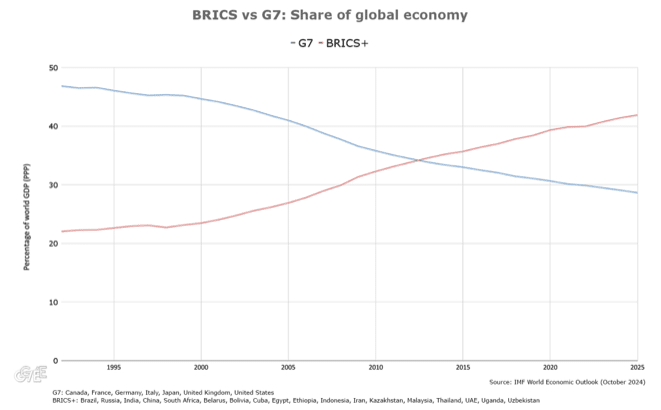
Indonesia: the world’s only nickel superpower
Indonesia’s economy is larger than that of the UK and France, which are permanent members of the UN Security Council. Indonesia makes up 2.44% of global GDP (PPP), compared to just 2.2% for the UK and France.
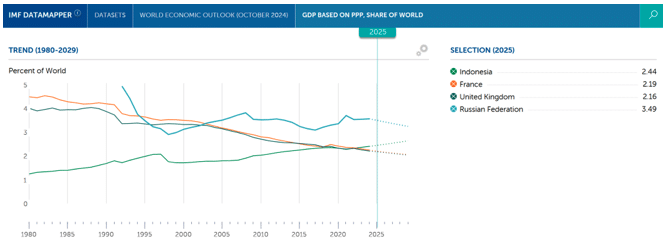
Indonesia is the world’s number one producer of nickel, by a large margin. Nickel is an important mineral needed for renewable energy technologies like batteries and solar panels.
In the past decade, the Indonesian government has embarked upon an ambitious industrialization program. Through careful state planning and industrial policy, Jakarta banned the export of raw minerals and, with strategic investments from Chinese state-owned enterprises and favorable loans from Chinese state-owned banks, Indonesia has moved up the value chain, processing nickel at home, instead of simply exporting the ore.
By capturing more value in the production process, Indonesia quintupled its nickel revenue, from just $6 billion in 2013, when it only exported raw ore, to $30 billion in 2022, when it domestically processed the mineral.
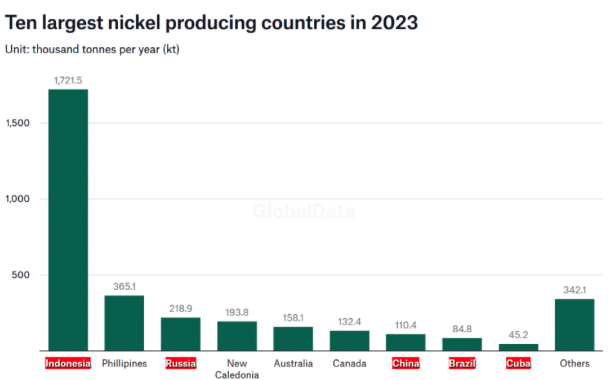
ASEAN prefers China over USA
China is the number one trading partner of Indonesia. Nearly a quarter of Indonesia’s exports (22.58%) went to China in 2022, and 28.52% of Indonesia’s imports came from China.
China is also the top trading partner of the Association of Southeast Asian Nations (ASEAN) as a whole.
A 2024 poll found that a slim majority (50.5%) of people in ASEAN as a whole would choose to ally with China over the United States, if they had to pick one.
In Indonesia, 73.2% of the population prefers China, whereas just 26.8% would go with the U.S.
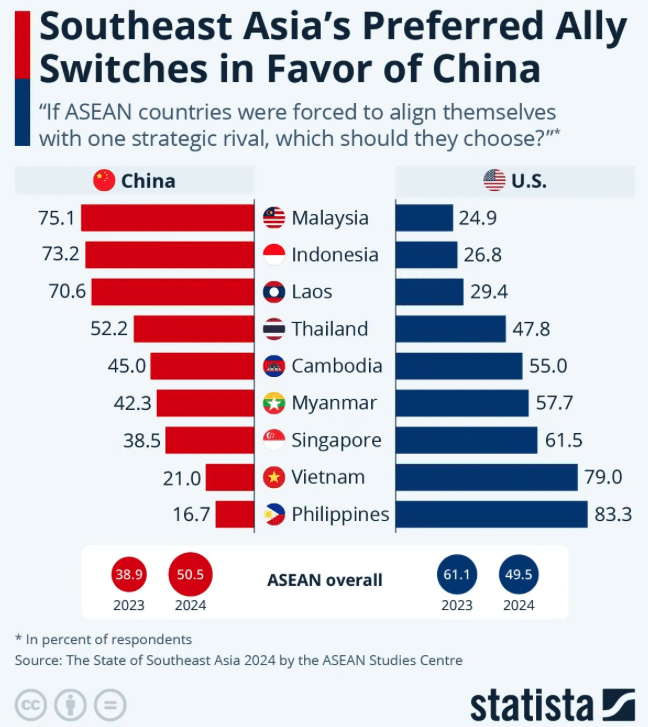
Many Southeast Asian nations have joined BRICS in the global de-dollarization movement, seeking alternatives to the dollar and the U.S.-dominated global financial system. At a summit in 2023, ASEAN members signed a deal to increase the use of local currencies in cross-border transactions and regional trade.
BRICS goals: reform global governance institutions and deepen Global South cooperation
At its 2024 summit in Kazan, Russia, BRICS endorsed a comprehensive plan to transform the international monetary and financial system, to benefit formerly colonized countries in the Global South.
In its capacity as chair of BRICS in 2025, Brazil announced on January 6 that Indonesia had been admitted as a full member.
Brasilia revealed that Jakarta had been invited to become a member at the 2023 BRICS conference in Johannesburg, South Africa, but the Indonesian government asked to delay the offer until after its 2024 presidential election.
Brazil stressed that the top goals of BRICS are to “reform global governance institutions” and to “deepen the cooperation of the Global South”.
In a statement congratulating Indonesia’s entry into the organization, China’s Foreign Ministry stated:
BRICS is a main platform for promoting solidarity and cooperation of the Global South and a major force driving the reform of the global governance system. BRICS countries are always committed to multilateralism, fairness and justice, and common development. BRICS’s latest addition follows the historic trend of the collective rise of the Global South.
Indonesia’s historic role in the anti-colonial movement
Indonesia’s entry into BRICS is deeply symbolic, given the leading role the country played in the anti-colonial movement in the 1950s and ’60s.
Indonesia’s leftist anti-imperialist leader Sukarno sponsored the Bandung Conference in 1955, and co-founded the Non-Aligned Movement in 1961.
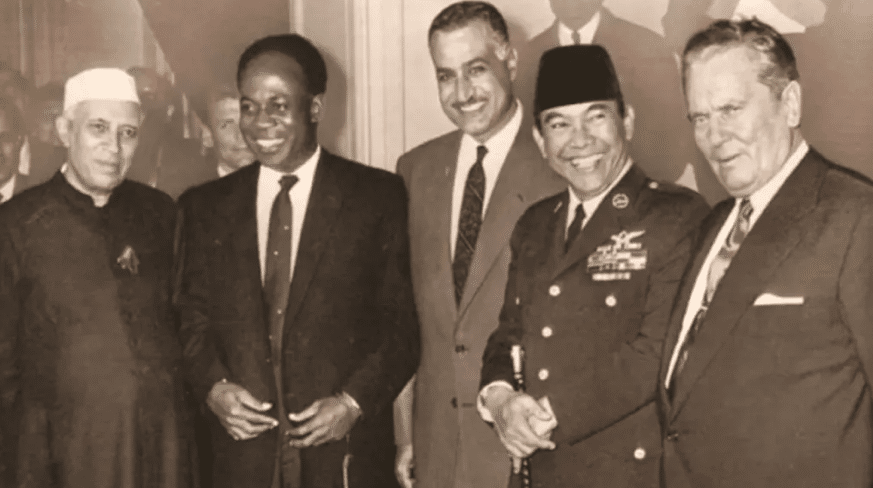
The founders of the Non-Aligned Movement (from left to right): India’s Jawaharlal Nehru, Ghana’s Kwame Nkrumah, Egypt’s Gamal Abdel Nasser, Indonesia’s Sukarno, and Yugoslavia’s Josip Broz Tito.
Sukarno was overthrown in a CIA-backed military coup in 1965. Following his ouster, Indonesia’s right-wing military dictatorship, led by General Suharto, carried out what is known as a politicide, or a political genocide.
With assistance from the U.S. government, Indonesia’s military junta killed between 1 million and 3 million leftists in 1965 and 1966, destroying the enormous Communist Party of Indonesia and massacring anyone accused of sympathizing with socialism.
The Washington Post reported on this in 1990, in an article titled “U.S. officials’ lists aided Indonesian bloodbath in ’60s”. The newspaper wrote:
U.S. officials 25 years ago supplied the names of thousands of members of the Indonesian Communist Party to the army in Jakarta, which at the time was hunting down the leftists and killing them in a crackdown branded as one of the century’s worst massacres, former U.S. diplomats and CIA officials say.
For the first time, the officials are acknowledging that they systematically compiled comprehensive lists of communist operatives, from the top echelons down to village cadres in Indonesia, the world’s fifth most populous nation. As many as 5,000 names were furnished over a period of months to the army there, and the Americans later checked off the names of those who had been killed or captured, according to the former U.S. officials.
The assassinations were part of a massive bloodletting that decimated the Partai Komunis Indonesia (PKI) in Indonesia, a Southeast Asian archipelago of more than 13,500 islands. The PKI was the third-largest Communist Party in the world at the time, with 3 million members, and through affiliated organizations–such as labor and youth groups–it claimed the loyalties of 17 million others.

